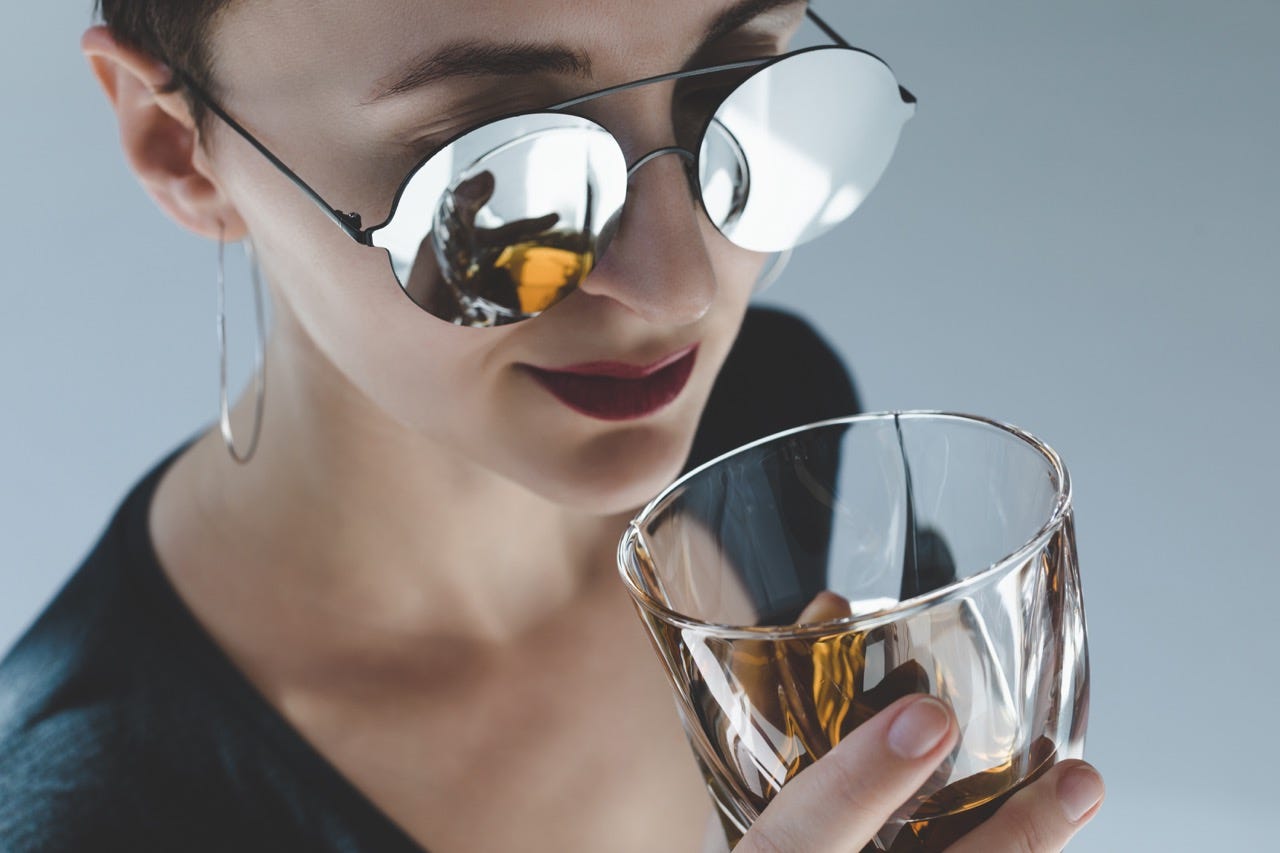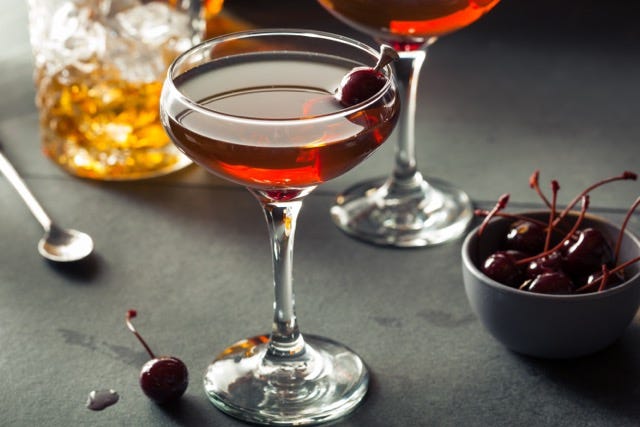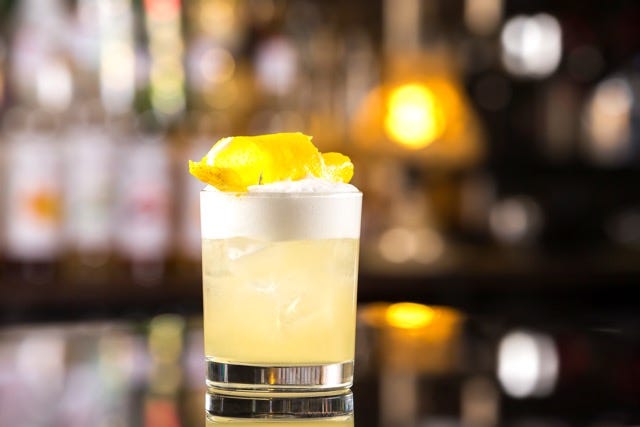
Hardly anyone likes whisky, or whiskey as it’s spelt in the US and Ireland, to start off with. That’s mainly, I suspect, because there’s insufficient reason to persist with it. Unlike wine and beer it’s not a drink you tend to have with, or even before, meals. It’s rare that it’s what most of the people around you are drinking.
I developed a taste for it when I was sent off to Scotland in the early 90’s by the magazine I was then working for to write a piece about Famous Grouse and fell in love with one of its components, The Macallan. Both the place (it has always been an iconic distillery) and the taste - those fabled sherry casks.
Even then I didn’t become a regular whisky drinker until about three years ago - it was an interesting avenue to explore during lockdown and I cemented my love for the drink (hmmmm - that sounds boozier than I intended) with a couple of visits to Scotland this year.
It’s such a wonderfully complex drink I’d love other people to enjoy it too so here are some suggestions.
Don’t start with scotch
This might sound strange from someone who’s just explained that’s how she kicked off but I don’t think it’s the easiest route. If I was doing it again I’d start with Japanese whisky which is typically subtler, sweeter and less peaty than Scotch (although it often contains Scotch whisky) and less butch than bourbon - though bourbon is great for cocktails (see below). Irish whiskey is richer and smoother than most Scotch too. Persuade someone to treat you to a Redbreast.
Try it in a cocktail
There are loads of great whisky cocktails but perhaps the easiest one to start with is a highball the rather sexier name for what used to be known as a whisky and soda. (A highball is anything that’s served long with a mixer).
When I wrote about Japanese whisky last year I suggested Nikka Days, a light, modern floral whisky which I described in the Guardian last year as ‘whisky for people who think they don’t like whisky’. (It’s a sign of just how much prices have risen that it was £32 at the time in Waitrose and is now £42, though it’s currently on offer at £33.95 at The Whisky Exchange which shows that supermarkets aren’t always the cheapest place to buy booze.)
Two other great first timer’s whiskey cocktails are the Manhattan which is generally made with rye whiskey or sometimes bourbon, sweet vermouth and a dash of bitters and the Old Fashioned - bourbon or rye, sugar syrup and bitters again. And in the summer you absolutely must try a peach julep, a delectable variation on the mint julep for which you need properly ripe peaches, dripping with juice.
If you like sharp-flavoured cocktails (which I do) try the wonderfully tart whisky or whiskey sour which is as much about the citrus (lemon juice) and egg white as the whisky. It’s traditionally made with bourbon but I quite like it with a lighter Scotch.
Don’t be over-impressed by age
The older a whisky gets, the more complex and challenging it can become. And for a whole raft of reasons including cost and the number of new distilleries that are coming online there are many younger whiskies on the market these days which are far more approachable. A good example is the Isle of Raasay’s which I visited back in the summer. Whiskies from newer whisky distilling countries like England, India and Taiwan tend to be fresher, fruitier and more accessible too.
Don’t be embarrassed to dilute it
You may have got the impression you shouldn’t add water to a single malt - and some purists still say you shouldn’t - but distilleries are quite relaxed about the practice and even encourage it. By dilute I don’t mean drown. A drop or too is enough to release the volatile aromas that will enhance your tasting experience but add a few more by all means to suit your own personal taste. I always do with a cask-strength whisky.
Find the style you like
As you begin to explore the whisky world experiment with different styles. That may be the warm rich sherried style that got me into whisky, represented by The Macallan if you can afford it and rather well by Benromach’s 10 year old if you can’t. If you’ve a taste for bold smoky flavours like lapsang souchong tea or chipotle chillies you might take to an Islay malt though it’s a bit like opting for an espresso as a first-time coffee drinker. Try the quirkily named - and well-priced Seaweed & Aeons & Digging & Fire. By contrast grain whiskies might appeal if you like more delicate, fragrant whiskies or go one of the more modern styles like Deanston’s Virgin Oak single malt which is aged in new bourbon oak casks.
Most specialist retailers do 30ml sample bottles so you get to try a number of different expressions without buying a whole bottle. Loch Lomond’s single grain is selling for £1.99 at the moment on Master of Malt, for example.
So are you into whisky and, if so, what was the first whisky that grabbed you? Any advice you’d give to whisky newbies?







+1 for adding a bit of water.
Doing that was something I always scorned, until I bought a bottle of cask strength Laphroaig (in Tesco, of all places).
Well. I think "challenging" would be a diplomatic way to describe the drink as it was in the bottle, so I thought I'd try adding a bit of water.
What a revelation. The flavours, subtlety, complexity, all opened up. Plus it no longer melted my teeth and chemically stripped away my tastebuds.
And as an extra bonus, it made it cheaper to drink. What's not to like.
Lastly, in reply to Angela, no ice. If you like your drink slightly chilled, just keep a bottle of still spring water in the fridge, and add that.
Hooray! It rather horrifies me how unpopular whisky is in a general sense. I mean, to those who enjoy it, it's *obsessively* popular, but I do see a lot of 🤢-style emojis online whenever it's mentioned. Such a tragedy! What other drink can you sip for 4 hours at the back of the pub and not feel oddly cheated in realising you've nursed just one shot of whisky the whole time? A universe of flavours.
And thank you for saying that adding water isn't a crime. Best way to get used to it (and also separate out the flavours, if you want to be a bit more analytical).